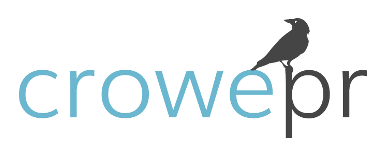Quantifiable ROI: 5 Metrics for Measuring PR Performance
Author: Kellie Benz
Strategic public relations campaigns have substantial benefits for brands and organizations, but marketing and public relations professionals have long struggled to identify clear metrics for evaluating success. While many marketing goals have been measured by tangible quantifiable metrics, such as sales conversions or website visits, PR goals have been more commonly rooted in qualifiable measures like brand recognition, public perception and customer loyalty.
As expected, a key goal in a media relations-focused strategy is to secure media placements for your brand, and tracking the total number of placements is an important metric. Whether in a major news source, trade publication or a local outlet, earned media can help impact the bottom line – from increasing visibility among potential new customers to providing SEO value.
Through the years, public relations pros have developed and identified key performance indicators (KPIs) to help measure the success and profitability of a campaign that goes beyond brand awareness. Not only do clear KPIs justify a PR strategy for clients, but they also help PR teams continue to refine their approach for future campaigns.
Below are five of the top quantifiable metrics to monitor when evaluating your brand’s PR and media strategy.
Media Impressions
In addition to the qualitative nature of the editorial placement, it’s important to understand the accompanying value of that specific placement. Enter: media impressions. Media impressions can be measured by both exposure (total number of stories) and reach (total impressions from those stories).
The news medium – whether the story ran in print, broadcast or online – affects the calculation for reach and exposure. For example, print pieces are often quantifiable based on the physical circulation of the publication, while broadcast segments are measured by total potential viewers. It’s important to understand and relay how the medium affects measurement when reporting media impressions.
Tracking media impressions in PR is imperative, as it places a quantifiable number on the potential viewership of an article – meaning the potential for new customers, industry leaders, investors or stakeholders to become familiar with your brand.
SEO Value
A thorough PR strategy should positively impact SEO in a variety of ways. As technology has evolved, PR pros can now track website visitors through Google Analytics and similar platforms, offering insight into web traffic as a result of PR outreach.
Remember those media placements we discussed? Securing coverage in publications with a high domain authority (a prediction on how well a website ranks on a search engine) will also boost the SEO value for your brand.
Referral Traffic
While editorial coverage comes in various shapes and sizes – online news outlets, print, broadcast, podcast and more – earned digital PR hits can help generate referral traffic to a client’s website, further boosting their web traffic, SEO ranking and potential to close a sale – all great ways to further showcase the ROI in PR efforts.
Outside of organic Google searches, organic traffic from sites like media outlets are the top way to generate website traffic, as the web visitors from those pages are more likely to spend longer on the website and ultimately be driven to make a purchase.
Monitoring web traffic on specific dates – for example, when a press release is sent out, a new product is launched or an interview or piece of coverage is published – can help correlate a jump in visitors directly to PR efforts. A jump in traffic also positively impacts SEO.
Through Google Analytics, PR pros can measure the number of total referrals and new referrals to a brand’s website from a media outlet, directly correlating a media placement to a sale conversion.
Social Media Growth
Social media is a powerful tool for reaching a brand’s target audience, offering plenty of trackable insights. PR pros can monitor social media metrics to determine the impact of an external PR strategy – and can leverage media wins to grow following.
Sharing editorial placements across social channels will not only give those stories additional exposure and – as we tactfully say – new eyeballs, but it will also bring additional credibility to the brand and bring visibility to your media partner. Sharing and tagging both the writer and the outlet encourages reposting, and, ultimately, can influence a new audience to follow your brand.
Share of Voice
Lastly, it’s important to monitor how your brand ladders up with industry competition. Share of voice refers to the amount of market share your brand owns compared to competitors and can be measured as a direct result of media placements.
Evaluating the total media coverage for your brand against the total media coverage in the competitive set offers great insight for evaluating PR efforts.
Are you looking to improve PR performance for your brand, or have questions about measuring PR success? Reach out to us!

